Sudan Flag Meaning
Three horizontal stripes of red, white, and black with a green triangle at the hoist, representing the Pan-Arab colors of the struggle for independence, the blood shed for freedom, peace and light, the battles against oppression, and the prosperity and agriculture of Sudan.
- Continent
- Africa
- Adopted
- 1970
- Ratio
- 1:2
- Colors
- red, white, black, green
- Designer
- Unknown
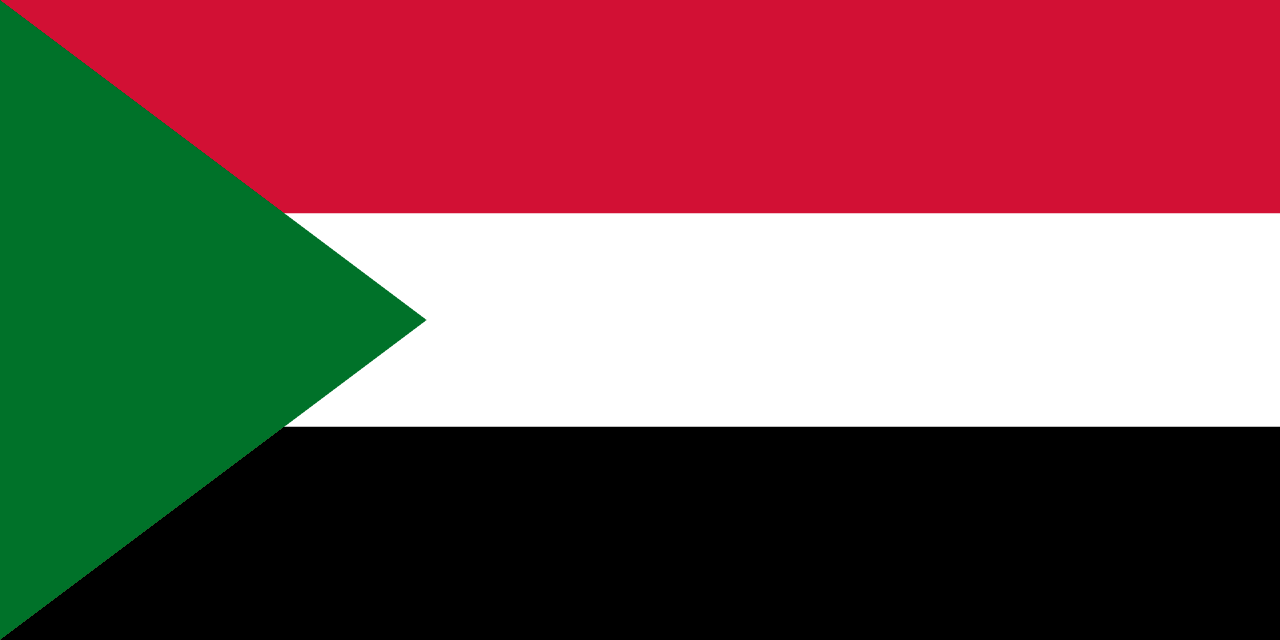
Symbolism
Red Stripe: Represents the blood shed by martyrs in Sudan's struggle for independence and freedom, symbolizing the sacrifices made by those who fought against colonial rule and for national sovereignty.
White Stripe: Represents peace, light, optimism, and the white flag of surrender, symbolizing Sudan's desire for harmony and the hope for a bright future after decades of conflict and struggle.
Black Stripe: Represents Sudan itself (the name means 'land of the blacks' in Arabic) and the battles against oppression, symbolizing the African heritage and the determination to overcome colonial domination.
Green Triangle: Represents prosperity, agriculture, and the fertility of the land, symbolizing Sudan's agricultural potential along the Nile River and the Islamic faith of the majority population.
Pan-Arab Colors: The flag uses the traditional Arab liberation colors that connect Sudan to the broader Arab nationalist movement and express solidarity with Arab unity and independence struggles.
History
- 3000 BC-350 AD: Ancient Nubian kingdoms including Kush and Meroë flourished along the Nile, developing sophisticated civilizations that rivaled and sometimes conquered Egypt, building pyramids and temples.
- 350-1504: Christian kingdoms of Nobatia, Makuria, and Alodia dominated Sudan for over 1,000 years, maintaining independence from Islamic expansion until gradual conversion and conquest.
- 1504-1821: The Funj Sultanate and other Islamic states controlled most of Sudan, bringing Arab culture and Islam while maintaining trade connections with Egypt and the Ottoman Empire.
- 1821-1885: Egyptian rule under Muhammad Ali brought modernization but also heavy taxation and cultural suppression, leading to growing resentment among Sudanese populations.
- 1881-1898: The Mahdist revolt led by Muhammad Ahmad al-Mahdi expelled Egyptian forces and established an independent Islamic state, the Mahdiyya, until British-Egyptian reconquest.
- 1898-1956: Anglo-Egyptian Sudan was established as a condominium, bringing British administration, education, and infrastructure while exploiting Sudan's agricultural and strategic resources.
- January 1, 1956: Sudan gained independence from Britain and Egypt, becoming Africa's largest country, but immediately faced challenges with regional divisions and political instability.
- May 20, 1970: The current flag was adopted during Gaafar Nimeiry's rule, replacing previous designs and emphasizing Sudan's Arab identity and connection to Pan-Arab nationalism.
- 1983-2005: The Second Sudanese Civil War between the Arab-dominated north and Christian/animist south killed over 2 million people and displaced millions more.
- 1989-2019: Omar al-Bashir's military coup established an Islamic fundamentalist state, leading to international isolation, civil wars, and war crimes charges including genocide in Darfur.
- July 9, 2011: South Sudan gained independence following a referendum, making Sudan lose about 25% of its territory and 75% of its oil reserves, creating economic crisis.
- April 11, 2019: Mass protests led to Bashir's overthrow by the military, beginning a difficult transition toward civilian rule with ongoing challenges and political instability.
- 2019-Present: A transitional government has struggled with economic crisis, political divisions, and regional conflicts while attempting democratic reforms and international reintegration.
Trivia
- Sudan was Africa's largest country until South Sudan's independence in 2011, and remains the third-largest African country by land area after Algeria and the Democratic Republic of Congo.
- The flag represents the meeting point of the Blue and White Nile rivers at Khartoum, forming the main Nile that flows north through Egypt to the Mediterranean Sea.
- Sudan is home to more ancient pyramids than Egypt, with archaeological sites at Meroë, Nuri, and other locations containing hundreds of Nubian royal tombs and monuments.
- Arabic is the official language, though over 100 languages are spoken, reflecting Sudan's position at the crossroads between Arab North Africa and sub-Saharan Africa.
- The country has significant oil reserves, though most were lost with South Sudan's independence, leaving Sudan dependent on agriculture and remittances from the diaspora.
- Traditional Sudanese culture includes distinctive music with instruments like the oud, tambour, and various drums, reflecting both Arab and African influences.
- The flag flies over a country where about 90% of the population is Muslim (mostly Sunni), with small Christian and traditional religious minorities.
- Sudan faces severe economic challenges including hyperinflation, currency devaluation, and shortages of basic goods following decades of mismanagement and international sanctions.
- The Darfur conflict (2003-2020) was labeled genocide by the International Criminal Court, with hundreds of thousands killed and millions displaced.
- Traditional foods include ful medames (fava beans), kisra (sorghum flatbread), and various stews, reflecting the agricultural traditions of the Nile Valley.
- The country has significant gold mining, both large-scale and artisanal, which has become increasingly important as oil revenues declined.
- Women played a crucial role in the 2019 revolution that toppled Bashir, with images of female protesters becoming symbols of democratic resistance.
- Sudan's location has made it historically important for trade between Africa, the Middle East, and the Mediterranean, though conflicts have disrupted these connections.
- The flag represents a country struggling with the legacy of civil wars, authoritarian rule, and economic collapse while attempting to build democratic institutions.
- Climate change and desertification pose major challenges for Sudan's largely agricultural population, with droughts and floods affecting food security and livelihoods.
Related Countries
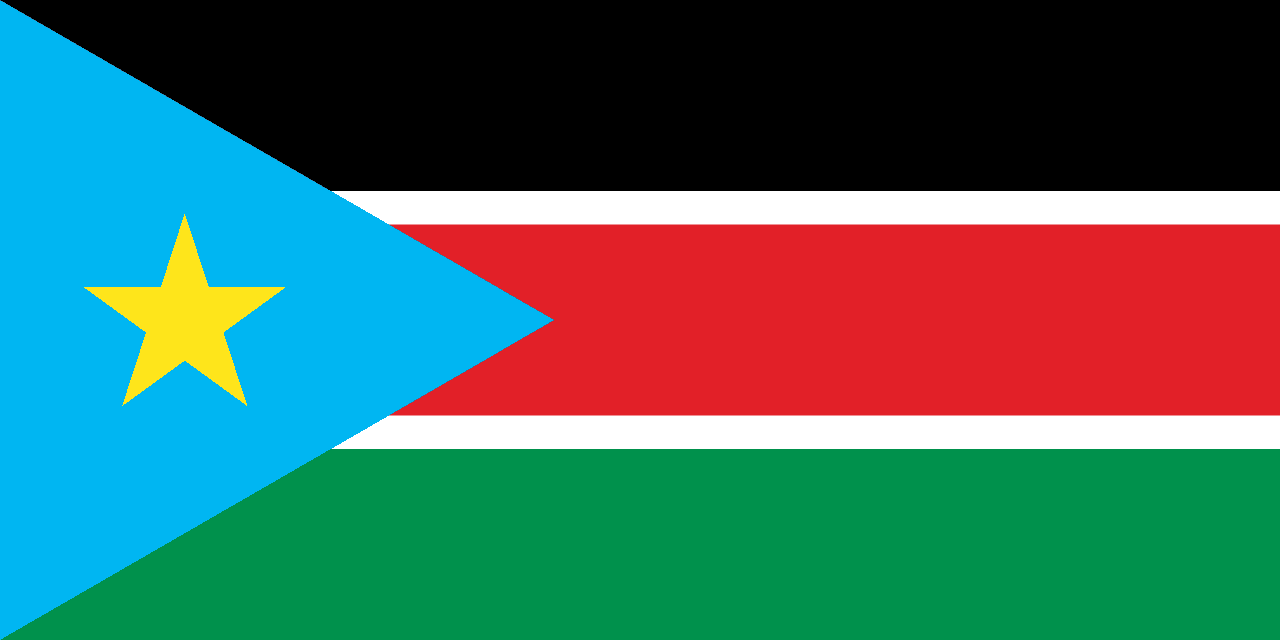
South Sudan
Africa
Three horizontal stripes of black, red, and white with a blue triangle at the hoist containing a yellow star, representing the African people, the blood shed for freedom, peace, the Nile River, and the unity of the states, designed for the world's newest country upon independence in 2011.
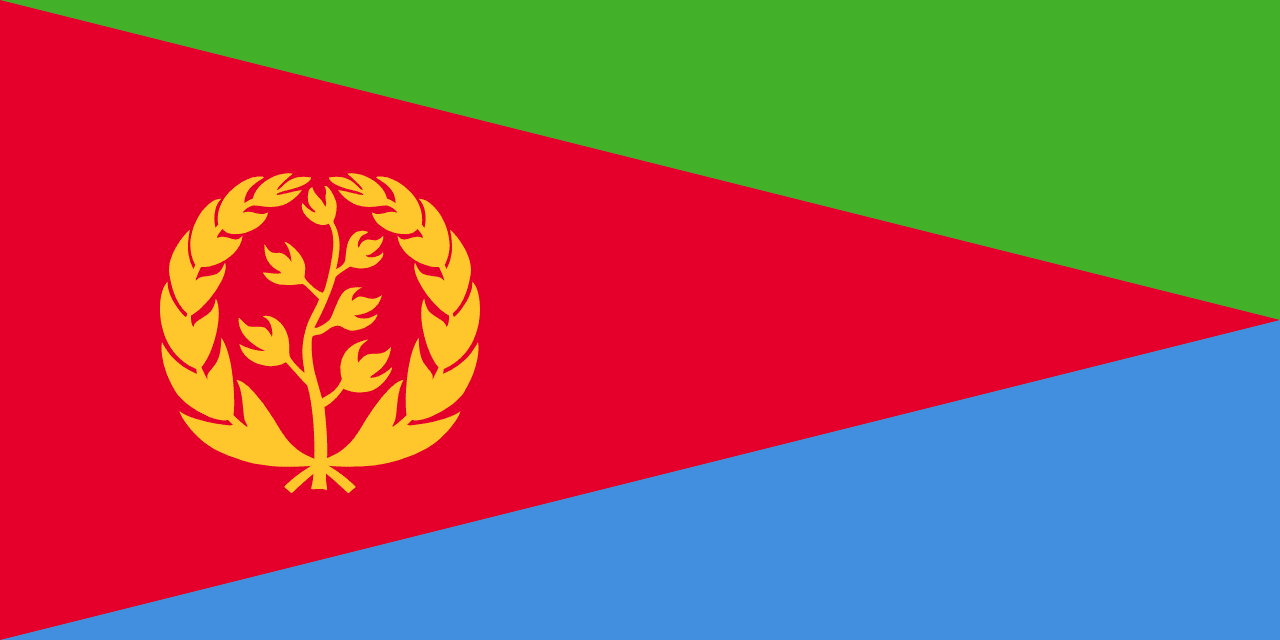
Eritrea
Africa
A red triangle at the hoist with a golden olive branch and wreath, adjacent to green and blue triangular sections, representing the struggle for independence, agricultural potential, maritime heritage, and hopes for peace.
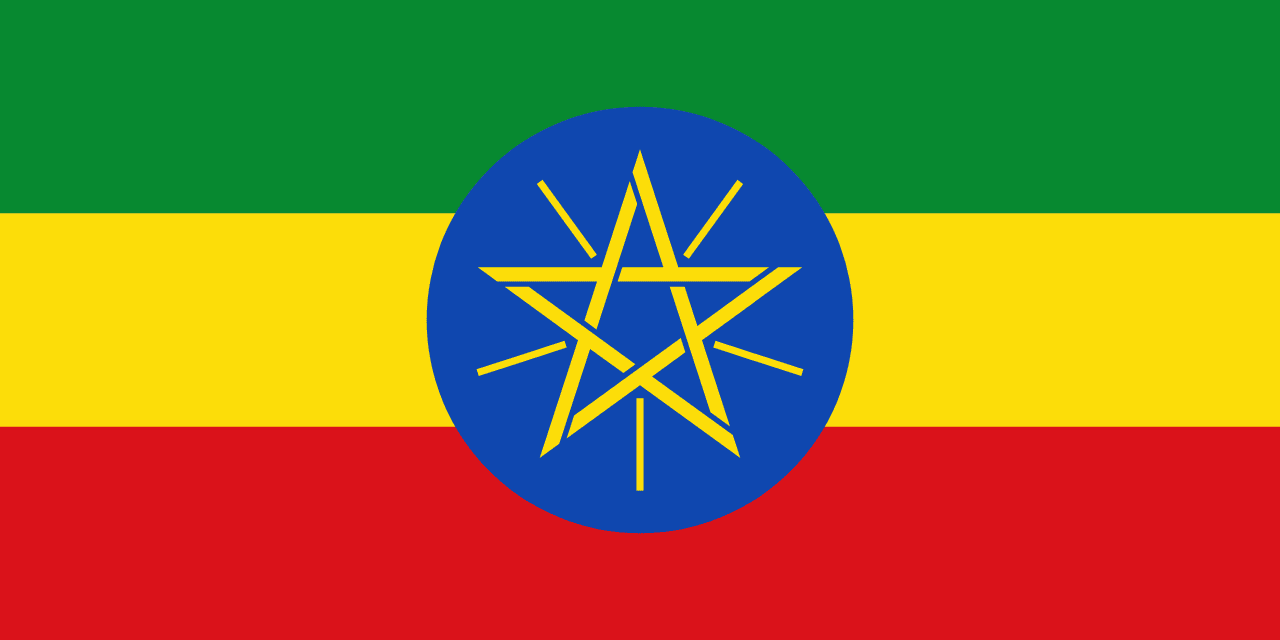
Ethiopia
Africa
Three horizontal stripes of green, yellow, and red with a blue circle containing a yellow five-pointed star in the center, representing the original Pan-African colors, the diversity and unity of Ethiopia's peoples, and the country's ancient independence.
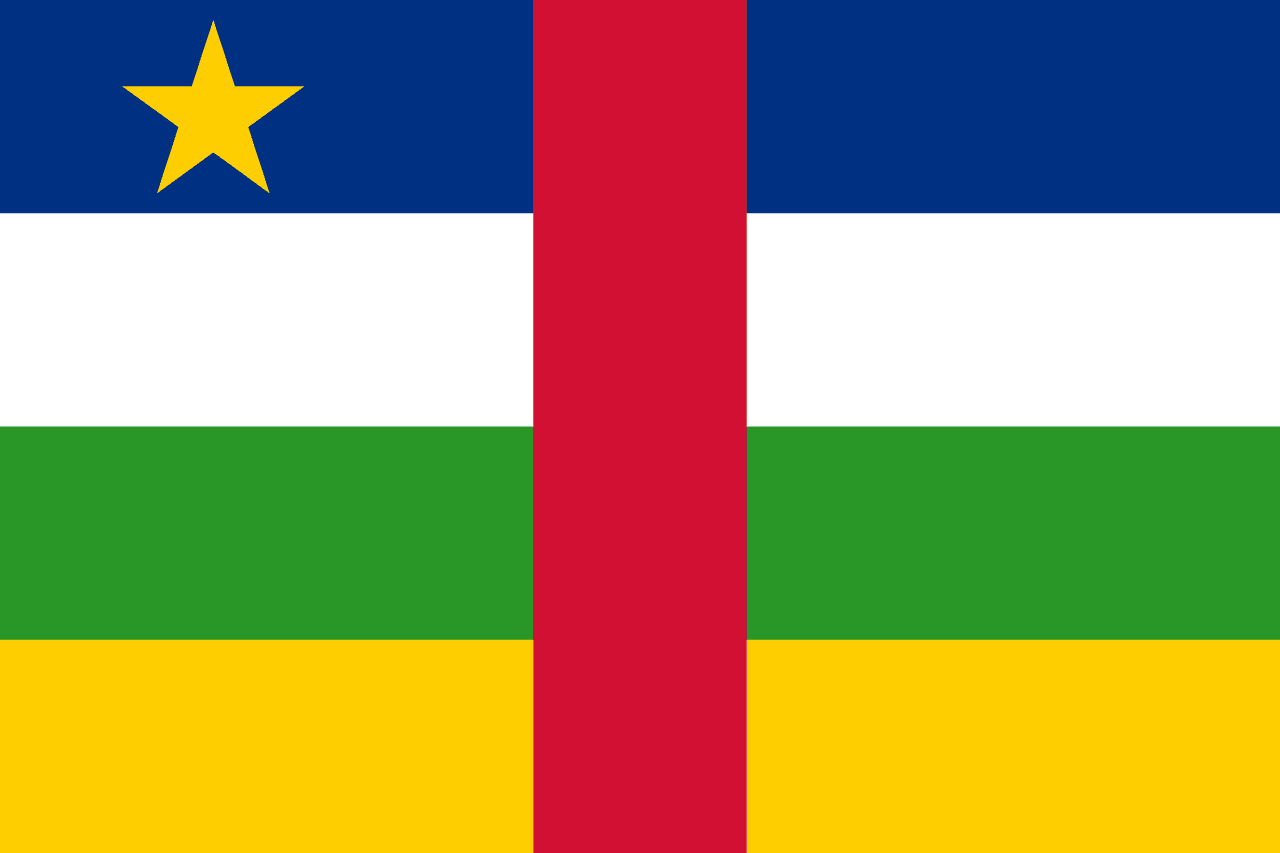
Central African Republic
Africa
Four horizontal stripes of blue, white, green, and yellow with a vertical red stripe through the center and a yellow five-pointed star in the upper hoist, combining Pan-African and French colors to represent unity and independence.
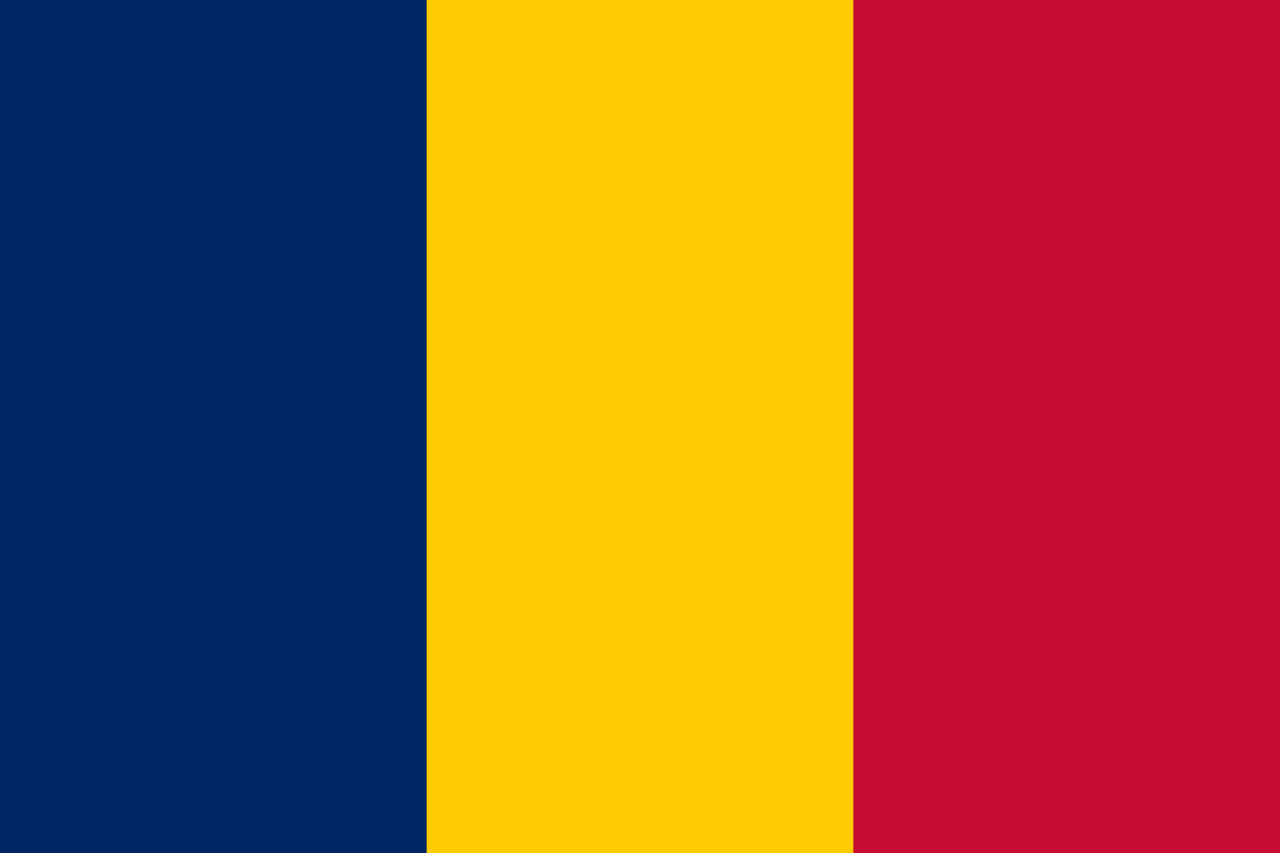
Chad
Africa
Three vertical stripes of blue, yellow, and red representing Chad's geographic diversity from the waters and sky in the north to the desert and savannas, adopted on the eve of independence from France.
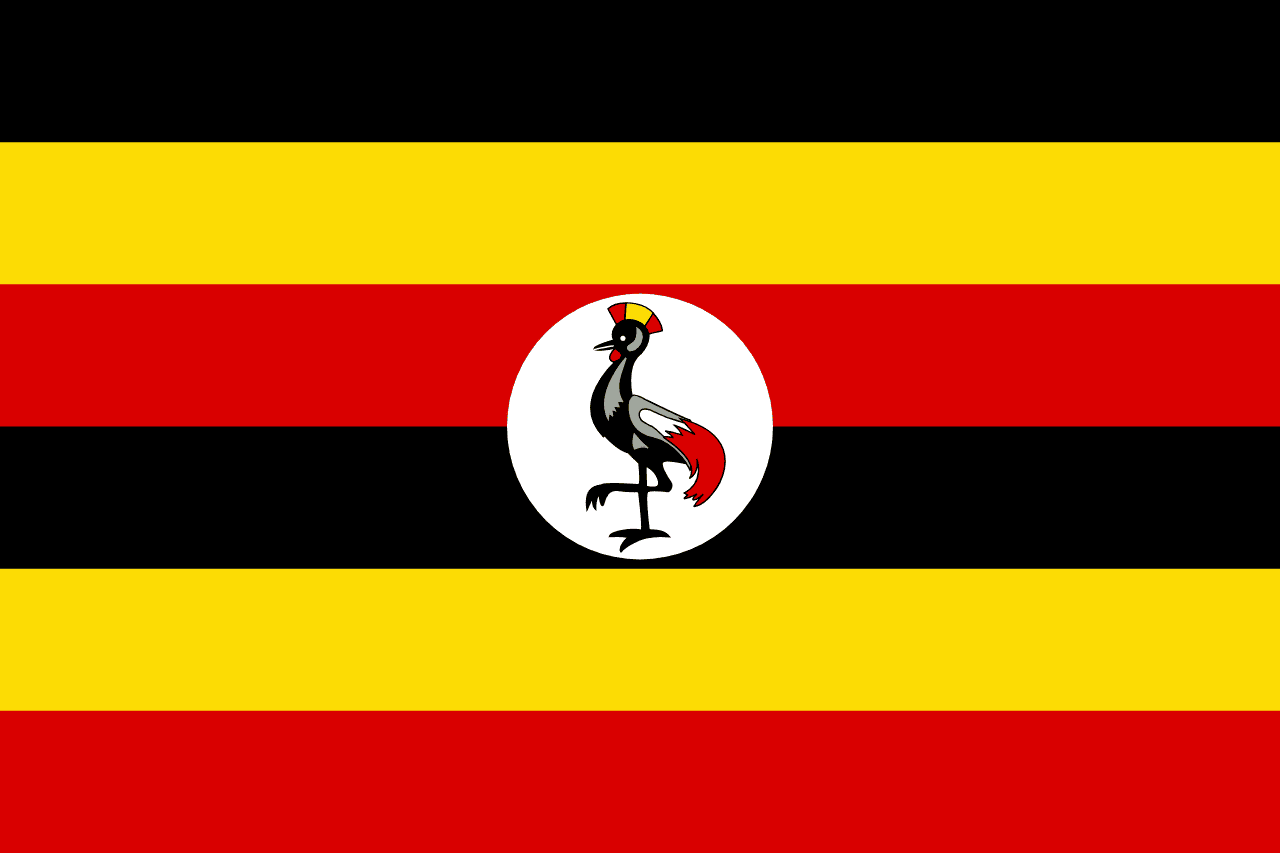
Uganda
Africa
Six horizontal stripes alternating black, yellow, and red (repeated twice) with a white circle containing the grey crowned crane in the center, representing the African people, sunshine and prosperity, brotherhood and unity, and the national bird that symbolizes Uganda's forward movement.